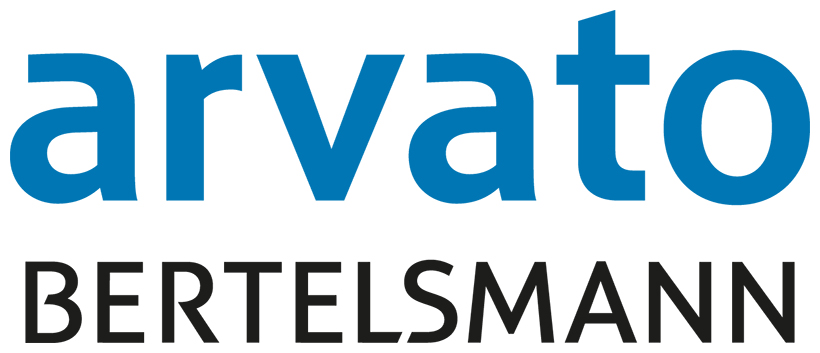Content Management in the Cloud – How to Get Out of the Scaling Trap
Marketers want their campaigns to “go viral.” But what happens when they actually do? Will your CMS withstand a run on your website? Markus Krenn from Arvato Systems elaborates.

© mj0007 | istockphoto.com
Marketers desire that their campaigns will “go viral.” But what happens when all the storytelling, video production, social media, and influencer marketing efforts really take off like a rocket? Will your CMS withstand a run on your website?
How influencers affect our IT
Have you heard of Gigi Hadid, Liza Koshy, or one of the most famous German YouTube stars, Bianca “Bibi” Heinicke (BibisBeautyPalace)? The ladies mentioned are so-called “influencers” or social media stars who pick up topics in social networks, produce videos that interest young people, or post pictures of themselves. And even if you do not know important influencers – your marketing department definitely should.
A well-known German drugstore chain experienced first-hand what kind of resonance influencer marketing campaigns can trigger. Together with Bibi of “BibisBeautyPalace”, they introduced a shower foam series to the market, which was distributed exclusively in their branches.
Shortly after the product’s announcement on Bibi’s YouTube Channel, young followers overran the stores, and the products were sold out within a few hours. This is a dream come true for the business, as long as the online store can withstand the onslaught.
Why is this relevant?
When viral marketing becomes a nightmare
Let’s take a look at the typical customer journey of a prospective buyer who wants to find out about the products an influencer promotes. As a company pays the influencer, the potential client usually ends up on the company’s website. The website is then suddenly confronted with an unusual and typically under-estimated high number of inquiries. And if congested servers turn the dream of a viral campaign into every marketer’s nightmare, we are left with the so-called “Slashdot Effect”.
The Slashdot Effect is named after a discontinued news service which reported on other Internet pages and regularly caused websites of large companies to collapse as a result of its enormous reach. In addition to successful marketing, other events can cause the same effect: When, for example, the Icelandic volcano Eyjafjallajökull erupted in 2010, the websites of numerous airlines collapsed under the weight of the rebooking requests, disrupting the global flight schedule.
Even seven years later, on the most recent Black Friday, many online retailers had to announce via Twitter or Facebook that their online shops had gone offline. Considering that this is exactly why Amazon founded the cloud service AWS, it is very surprising that more than a decade since the development of public cloud services, web servers still go down when requests shoot up unexpectedly.
So why does the problem keep recurring?
Collective procrastination and other causes
On the one hand, there is an increasing burden on IT departments, with IT budgets falling for the most part. On the other hand, processes are becoming more agile, e.g. in the marketing environment, where a lot of experimentation is taking place.
As a consequence, when dealing with the after-effects of temporary resource problems, one often moves very quickly back to day-to-day business. There is rarely an attempt made at the sustainable elimination of the causes of the problem. One of my colleagues coined the term “collective procrastination” for this behavior, meaning “we really should solve the problem at some stage”, but no one does...
In addition, many companies simply don’t know how quickly such a problem can be sustainably solved using scalable resources from the cloud. And in most cases, it is not even necessary to replace an existing web CMS or completely revise the architecture of the existing application.
So, how can you improve the scalability of your CMS?
1. Content Management in Containers
With this solution, the entire existing CMS “as it is”, including all underlying services like the database and the operating system, is provided in the cloud through the use of containers such as Docker or Kubernetes. This solution is possible with most CMSs. However, problems can arise when licensing the database or CMS system in the cloud.
2. CMS from a Cloud Marketplace
An alternative to the operation of container technologies is the use of an existing CMS installation in the marketplaces of public cloud providers. Especially open source content management systems can be found in the cloud in a wide variety of versions and variants.
The multitude of images offered often makes things confusing, as the services and configuration possibilities strongly depend on the publisher of the predefined images. These offers, however, are unbeatable when it comes to one specific point: The provision of images occurs almost at the touch of a button. For short-term or temporary installations for individual landing pages or marketing campaigns, it may be worthwhile to take a look at the marketplaces of the providers.
For existing installations, however, there is always the need to migrate to the cloud solution. Under certain circumstances, the costs for this may be considerably higher than for provision via container services.
3. Use of Cloud-Native Solutions
Entire websites can also be provided via the Azure Web Apps or similar apps from other public cloud providers. For smaller installations, this is the ideal solution.
As usual with cloud-native solutions, companies do not have to worry about scalability, operating systems, or databases, but can rely on the architecture of the public cloud providers.
The disadvantage, however, is that – in comparison to the other alternatives – a solution is offered which is not based on CMS systems. The offered technologies rather create a solution based independently on different programming languages .
The range of supported technologies varies from provider to provider. Depending on the technology used, this results in a certain dependence on the provider, a so-called vendor lock-in.
For smaller web presences there is great potential here, analogous to the marketplace described above, especially when considering the TCO over the entire machine lifecycle: The billing model in these cases is purely usage-based. When, after a certain duration of a campaign, there is hardly a user left on the site, there are no more costs.
One more thing...
Improving security and latency with a cloud solution
You can also get latent security problems under control here – problems which arise in collaboration with external marketing agencies. The advantage of the native-cloud solution is that it is no longer necessary to host landing pages – and thus software code for individual actions – on servers within your infrastructure that have been produced by an agency. You can shift this – including the associated governance issues – to the cloud.
As another positive side effect, the cloud enables you to optimize your content delivery network and minimize latency for dynamic content by globally delivering content across multiple regions. All the better for an optimized customer experience, regardless of whether the prospective customer is located in New York or Sydney.
Markus Krenn has been with Arvato Systems for more than ten years and supports innovative products and concepts in various roles until they are ready for the market. For example, he managed the German launch of the iBooks Store or the Amazon Kindle as product manager for eDelivery software. Markus has been working on the cloud for five years and, as Customer Success Manager for Azure Solutions, is responsible for the further development of innovative cloud ideas based on Microsoft technologies.
Please note: The opinions expressed in Industry Insights published by dotmagazine are the author’s own and do not reflect the view of the publisher, eco – Association of the Internet Industry.





